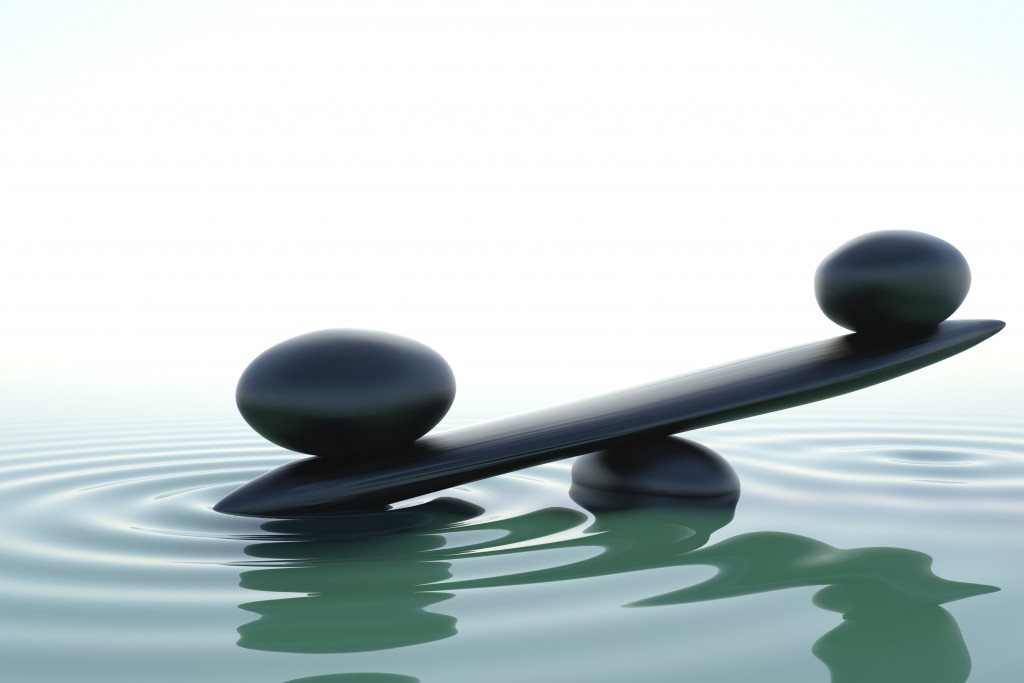As I was leaving for work, my son came running to hug me. I had stayed out late working the last few days and did not see much of him. His eyes misted over while we hugged and a pang of guilt hit me. “I really suck at this work-life balance thing,” I thought myself. For the rest of the day, I mulled over why achieving balance can be so difficult.

When we think of the word “balance,” the picture that comes to mind most often is that of a weighing scale. A weighing scale implies fairness — a static fairness. When one side dips down, it is necessarily unfair to the other side. Balance is a static state that is only achieved when both sides are equal.
With a scale in mind, I find that I need to have balance at all times — just the right amount work and just the right amount of family (or personal) time. When I have an extended time of one or the other (e.g. more than a week away at work, or away on vacation), both can feel “wrong” to me. And so I began to reason that perhaps the problem is not so much with achieving balance but perceiving it.
What if we used a different metaphor? What if, instead of using a scale to think about work-life balance, we thought of it as a wave? After all, real life is not static. We live in continual ebbs and flows, ups and downs, having less and having more. Thinking of work-life balance as a wave opens us to more positive and adaptive reframes – different ways of seeing something.
Here are three work-life balance reframes that have been helpful to me.
1. Normalizing Unbalance
When one part of a wave is high, another part of a wave must necessarily be low. We can’t have both parts be equal. Once we “normalize” work-life balance as necessarily unequal at any given time, we are more able to experience acceptance. Living in a vicious cycle of frustration, guilt, and self-criticism doesn’t help anyone. Being able to enter into acceptance and flow with the waves allow us to be more productive at work and more present at home.
2. Recognizing Change
Waves do not stay the same size. There will be times when waves are larger and times when waves are smaller. When waves are larger, the balance will be unequal — more time either at work or at home. When waves are smaller, we have more evenly distributed time spent at both work and home. When we feel frustrated that we (or our spouses) do not seem to have good balance, it is helpful to recognize that change will come. Anticipate it, and plan for it.
3. Collaborating Flow
The idea of work-life balance as a wave works best when we share it with family members. I asked my wife what she thought about seeing my work-life balance as a wave rather than a scale. She felt that the analogy helps her to respond more calmly to my absence, knowing that at some point in time, the wave will undulate and time will be spent with her and the kids.
As a couple, when we are both aware and working collaboratively towards managing our work-life (work-family) flow, we can also minimize conflict and have more positive experiences when we spend time together. It is a good thing when we can learn to steer the oars together, each one helping the other.

With the weighing scale, we fight nature and insist upon an artificial, static balance; with the wave, we flow along with nature and enjoy the rhythmic tightening and loosening that is real life.
—
© Johnben Loy, 2015. Unauthorized use and/or duplication of this material without express and written permission from this blog’s author and/or owner is strictly prohibited. Excerpts and links may be used, provided that full and clear credit is given to Johnben Loy and www.johnbenloy.com with appropriate and specific direction to the original content.
